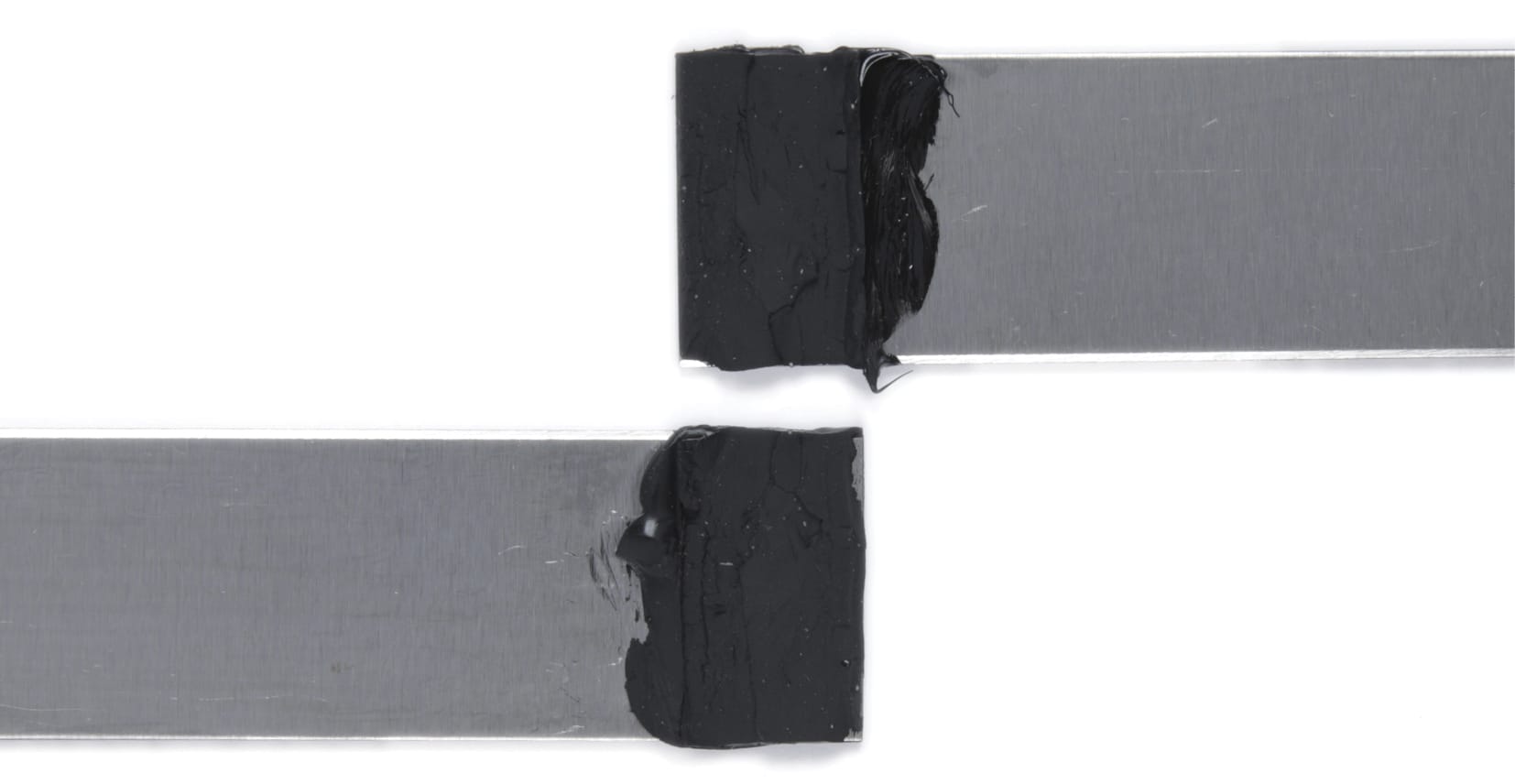7.1.2 Cohesive Failure
Cohesive failure occurs when a fracture appears within the adhesive. In this failure mode, the adhesion strength was not exceeded, meaning that the bond between the substrate and the adhesive was not compromised; rather, the adhesive was overcome by external forces. This means that adhesion to the surface is stronger than the intermolecular bonds of the adhesive. As shown in Figure 210, the adhesive residue is visible on both substrates. This failure mode is common in uncured or insufficiently cured adhesives.


7.1.3 Substrate Failure
Substrate failure occurs when external loads exceed the strength of one or the other substrates. When this happens, the substrate reaches the point of deformation and eventually its yield point, resulting in failure. This type of failure does not indicate failure of the adhesive; rather, if the external loads to which the assembly was subjected are reasonable proxies for real-world conditions, a stronger substrate is needed. Put simply, cohesion and adhesion are stronger than the substrate (in the specific dimensions and assembly).

Delamination is another form of substrate failure that may occur in non-homogenous substrates, such as fibre-reinforced plastics, or laminated materials, such as plywood. Alternatively, coated substrates may suffer substrate failure in the form of the coating tearing off the base material; this is most often seen with paints and other surface coatings (see Section 4).

